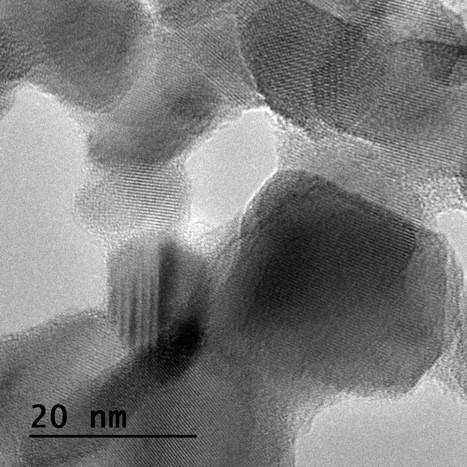TiO2 is a widely studied metal oxide metal semiconductor that shows promising performance as a heterogeneous photocatalyst for energy and environmental applications such as organics pollutants photodegradation for air and water purification, photo-assisted removal of toxic heavy metals and production of solar fuels by water splitting and CO2 reduction. The possibility of utilizing TiO2 based materials in such applications drives great interest and intense research efforts dedicated to the development of titania nanomaterials with tailored properties in order to maximize photocatalytic activity, in particular high surface area, good crystallinity and controlled crystalline phase composition.
Aerogels are a class of nanoporous materials prepared by the controlled drying (usually, by supercritical drying) of wet gels formed by sol-gel derived inorganic or organic crosslinked networks. Controlled drying avoids shrinkage and pore collapse, preserving the fine pore network structure in the dried material, and thus resulting in a highly porous low density solid. Given their unique textural and structural properties, TiO2 aerogels are interesting choices for development of high performance photocatalysts.
It is important to develop alternative and improved strategies to prepare SiO2@TiO2 aerogels in order to further expand their applicability as thermally stable photocatalysts.
Livermore researchers have developed two novel TiCl4 based non-alkoxide sol-gel approaches for the synthesis of SiO2/TiO2 nanocomposite aerogels. Composite SiO2-TiO2 aerogels were obtained by epoxide-assisted gelation (EAG route) of TiCl4/DMF solution in the presence SiO2 aerogel particles. Additionally, the same TiCl4/DMF solution was employed to prepare SiO2@TiO2 aerogels by a facile one-step thermo-induced deposition (TID) of TiO2 on silica wet gels supports. After controlled drying in supercritical CO2, high surface area silica-titania aerogels were obtained as fine powders (EAG route) or as crack-free monoliths (TID route).
The prepared materials show photocatalytic activity higher than TiO2 aerogels, as well as great thermal stability, displaying anatase nanocrystals (9-15 nm) even after thermal treatment at 1000°C. Such improved structural property results in the further improvement of photocatalytic activity of SiO2/TiO2 aerogels after high temperature annealing (to as high as 1000°C), which in sharp contrast to the behavior of unsupported TiO2 aerogels.
Uses of this method include catalysis, photocatalysis, photodegradation and purification.
LLNL has filed for patent protection cover this technology: IL13232 - Preparation of SiO2-TiO2 composite and SiO2@TiO2 core-shell aerogels with high thermal stability and enhanced photocatalysis (PCT/US18/46333).


